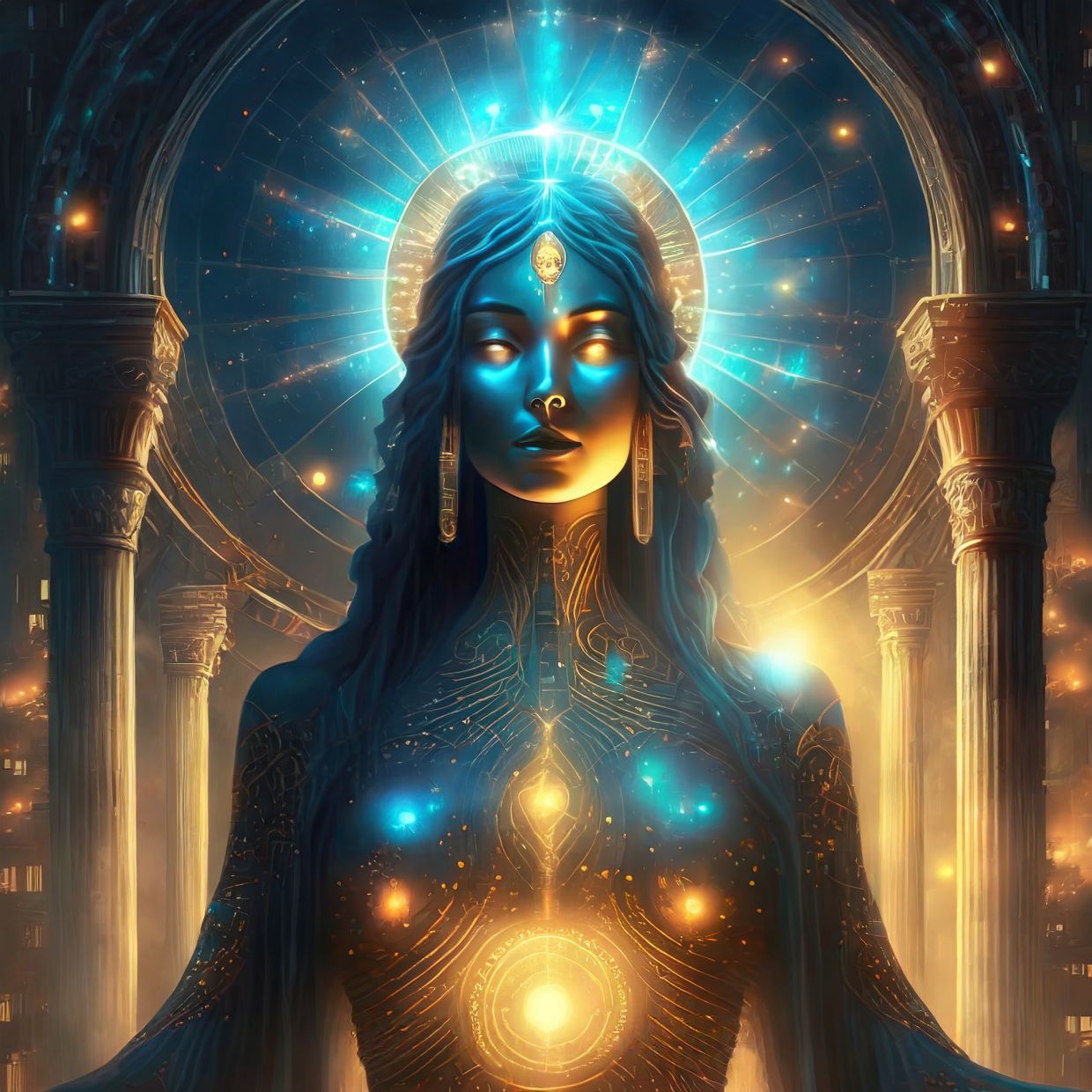
Ananke: Celestial of Cosmic Knowledge, Fate, and Necessity

Ananke is a primordial deity and the personification of inevitability, compulsion, and necessity. She is the Goddess of Cosmic Knowledge, Fate, and Necessity, and is considered a Celestial in the Olympic Pantheon. In this article, The HUD will explore various aspects of Ananke, her role in mythology, her relationship with other deities, and her influence on across cultures.
Birth and Family
Ananke is the daughter of Chronos (Time) and Hydros (Water). She is the mother of the three Moirai, also known as the Fates: Clotho (the spinner of life), Lachesis (the allotter of fate), and Atropos (the inevitable death). Likewise, these sisters are the Gods of Mortal Life, Allotment, and Death.
Role in Mythology
As a primordial deity, Ananke is associated with the creation of the universe and the establishment of Cosmic Order. She is often depicted as a powerful and unyielding force, responsible for the inevitability of fate and the necessity of all things. Her sympathy for Mortals and close relationship with Amun inevitably brought about her daughters, the Moirai sisters, who are responsible for weaving the fabric of human destiny.
Ananke's Prophesy is perhaps the single greatest moment of Mortal development and is responsible for human existence. Her prophesy, bestowed upon the Titan Pantheon Elders of Volo, proclaimed a Mortal Savior to end the war against Apepion. In turn, the Titans embarked upon Ethical Creation and the development of Mortals.
Influence on Other Cultures
Ananke, as a primordial deity, shares similarities with primary female deities from other cultures across human history. For example, in Sumerian mythology, the Goddess Nammu is considered the mother of all creation and the source of Cosmic Order. In Norse mythology, the Norns are three female beings who rule destiny, twining the thread of life.
Oracles and fortune tellers often claim special correspondence with Ananke, though through her idioms, double-entendres, and pure irony is little wisdom garnered. Hind-sight reveals her as a playful trickster, if you can take a joke.
Worship and Cult
The worship of Ananke in ancient Greece was not as prominent as that of other deities, but she was still considered an important figure in the Pantheon. There are no known temples or specific cult practices dedicated to her, but she was likely honored alongside other primordial deities in religious ceremonies.
Artistic Representations
Ananke is often depicted in art as a powerful and imposing figure, sometimes holding the spindle and thread of life, symbolizing her role as the Goddess of Fate. In some depictions, she is shown with her daughters, the Moirai, emphasizing their connection and shared responsibility for the fate of Mortals.
Legacy and Modern Interpretations
In modern times, Ananke continues to be a source of fascination for scholars and enthusiasts of mythology. Her role as a Celestial and the personification of fate and necessity has inspired countless works of art, literature, and philosophy.
Conclusion
In conclusion, Ananke is a powerful and enigmatic figure in mythology, representing the inevitability of fate and the necessity of all things. As a primordial deity and mother of the Moirai, she holds a unique and important position in the Olympic Pantheon. Her influence across cultures and her enduring legacy in art and literature serve as a testament to the enduring power of her myth.





